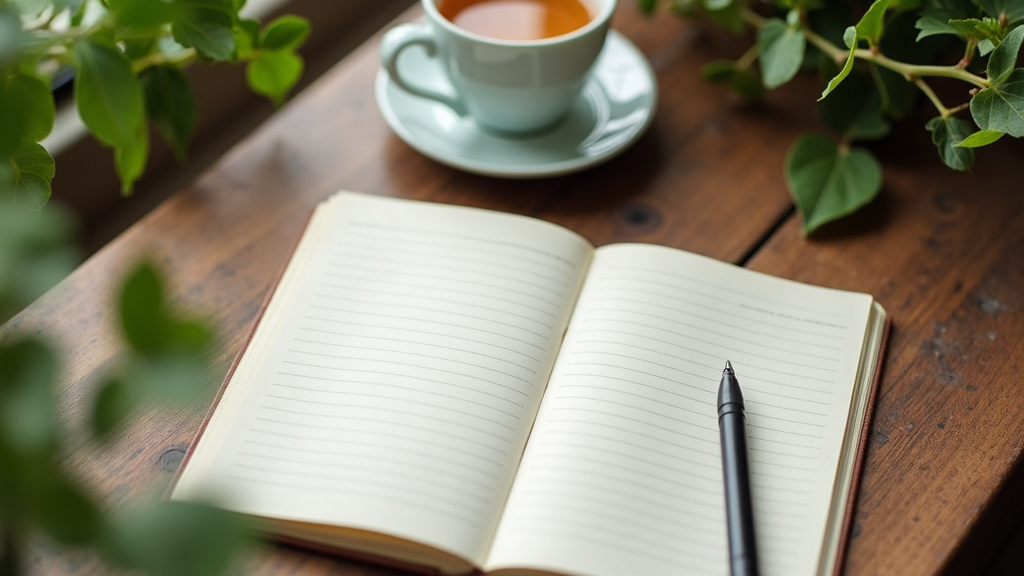Taking time to practice gratitude can transform the way you go through daily life. Rather than just racing through the day and dealing with stress, making gratitude a habit gives a real boost—not only to moods, but also to an overall sense of wellbeing and how to better manage challenges. It’s a simple idea that sometimes slips by unnoticed, but using gratitude as a self-care tool can actually be incredibly powerful. Here, I’m sharing exactly what this practice looks like, why it’s worth your time, and how you can make it part of your regular routine.

Getting Started with Gratitude Practices
Practicing gratitude doesn’t have to take long, and you don’t need anything fancy to get started. All you need is a way to capture your thoughts, and a bit of intention. Here are some simple ways to bring gratitude into daily life:
- Gratitude Journaling: Each morning or before bed, jot down three things—specific ones—that you’re grateful for. It might be a delicious meal, a funny moment with a friend, or just the fact that you caught all the green lights on your way home.
- Gratitude Jar: Every time something happens that you are grateful for, write it on a note and drop it in a jar. As time goes by, the jar gets filled up with a record of positive moments. On difficult days, reading a few of these notes can completely change your mindset.
- Mental Lists: If writing isn’t your style, try quietly going through a list of things you appreciate while brushing your teeth or taking a walk.
These small efforts really add up. I notice that when I’m consistent, I bounce back more quickly from tough moods or stress.
Making Gratitude Stick: Easy Habits to Adopt
Adding gratitude to your routine can feel awkward at first, especially if you’re used to focusing on problems. Here are some tricks that can be used to help gratitude become a regular part of your life:
- Pair Gratitude with an Existing Habit: Link your gratitude practice to something you already do each day, like making your morning coffee or locking up at night. This acts as a reminder to practice gratitude and helps to make it feel automatic.
- Keep it Visible: Put your gratitude notebook, sticky notes, or jar somewhere easy to see. A journal by your bedside can be a good reminder.
- Share Gratitude with Others: Sometimes a text to a friend or family member is a good way to thank them for something specific. Sharing makes the good vibes last longer and strengthens connections.
- Don’t Force It: On rough days, “I’m grateful for my warm bed” or “I enjoyed a quiet cup of coffee” totally counts. It doesn’t have to be big to be worthwhile.
The more relaxed and flexible that you can be about it, the easier it is to fit these habits into any kind of day—whether it’s an amazing day or just an average one.
Common Challenges and How to Work Around Them
Like every new habit, gratitude practice comes with hurdles. Here are a few challenges that you may face and tips to help you keep going:
- Struggling to Find Anything Positive: On tough days, even the smallest wins count. Hot showers, your cozy warm bed, a pet’s silly antics—all of these matter.
- Forgetting to Practice: Reminders on your phone or a gratitude buddy can help. Life gets busy and reminders smooth the way.
- Gratitude Feeling Repetitive: That’s normal in the beginning. Changing your focus every so often can be helpful: look at relationships, health, or things you’ve learned.
- Feeling Silly or Insincere: It can feel awkward at first. Let it be awkward—meaning usually grows over time.
There’s no “correct” or official way to do gratitude. Just showing up for yourself, even in a tiny way, has real value.
Gratitude During Tough Times
It’s even harder to be grateful when everything seems to be going wrong. During difficult times, aim for simple or neutral gratitude: “I got out of bed,” or “There’s food in the fridge.” These basic things don’t erase problems, but they offer a little bit of hope and stability.
Some people report that on very tough days, gratitude reminds them of their resilience—maybe recalling a challenge they got through in the past, or finding a support system, no matter how small.
How Gratitude Impacts Wellbeing
There’s loads of science behind why gratitude is great for self-care. It gives you an emotional lift that lasts, not just a quick mood fix. People who regularly spend time thinking about what they appreciate tend to see their mental health, immunity, and relationships begin to improve (Harvard Health).
Frequently Asked Questions
Here are a few common questions about bringing gratitude into your daily life:
Question: How long does it take to see gratitude’s benefits?
Answer: Many people notice a shift within two to three weeks, especially with regular practice. At first the difference may be subtle, like more patience, less stress, or a little better sleep.
Question: What if I’m really down—does gratitude help?
Answer: Gratitude isn’t a cure-all, but even when things feel bleak, noticing one thing you appreciate can lighten your load. Recognize the challenge, but keep searching for those tiny sparks of relief.
Question: What if nothing feels worth being grateful for?
Answer: Everyone has days like this. Go for really little wins—a favorite song, having clean water, or seeing your pet meet you at the door. With time, spotting these moments gets simpler.
What to Expect by Making Gratitude Part of Your Daily Life
Staying consistent with a gratitude habit is one way of taking care of your mind and emotions. Over time, these moments of appreciation influence how you see yourself, others, and the world. Gratitude can tone down stress, help you deal with curveballs, and sprinkles more joy into your days.
Getting started doesn’t mean buying anything special—just spend a few moments and show up for yourself; one small note of gratitude at a time. Start today, and watch how your perspective begins to shift for the better.
